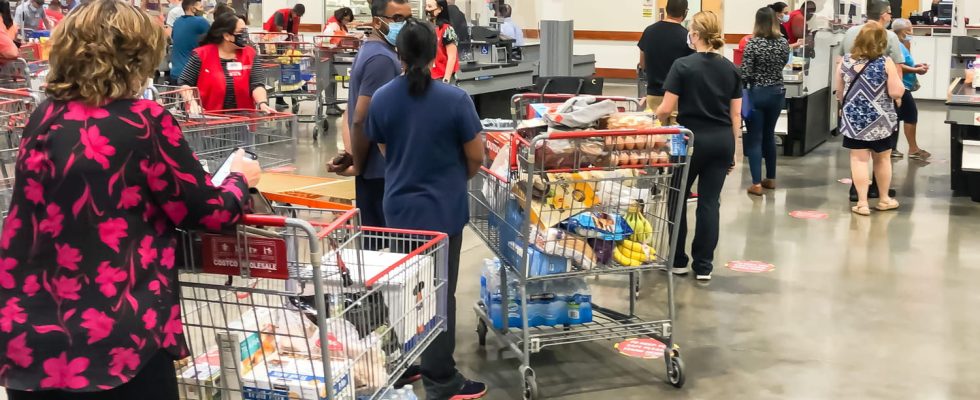Do you always take the slowest line at the supermarket checkout? Here’s what you need to know to put an end to the wrong choice!
We have all experienced this very uncomfortable situation: when we are shopping in a supermarket and it comes time to queue to pay, very often we choose one of the slowest lines and we see the others moving further ahead. quickly as we next door. How frustrating to have made the wrong choice!
It must be said that it is not really easy, as there seem to be so many parameters that escape us in this difficult choice. Should we rely on the speed of execution of the cashier, the dynamism of the people already in the queue and the number of elderly people, the filling rate of the shopping carts in front of you or simply the number of people in each queue?
Imagine that there is a mathematical answer and objective arguments to this terrible problem. This was recently given on TikTok by a famous mathematician, Eduardo Sáenz de Cabezón, presenter of a popular science and humor program on the Spanish channel TVE. He broadcast a video dedicated to this question, giving THE answer based on math.
The scientist based himself on a specific situation so that everyone could plan concretely. “When you’re at the supermarket checkout and there are two lines: one with a few carts, but full, and another with a lot of carts, but with very few things inside, which one do you choose? you?” he asks.
Sáenz de Cabezón’s response is very clear: “Mathematics tells you that it is better to take the line with the fewest carts, even if they are very full”. And the explanation is based on the analysis of all the time lost! “What is really the operation that wastes time? Well, that’s the payment. In reality, the delivery of products to the belt is fast, but it is the payment which delays everything and which can generate problems”, according to him. The mathematician concludes: “We must therefore go in the queue where the process which wastes time will occur least often. It’s clear: it’s better to have a line with a few carts, even if they’re very full, than a line with a lot of carts, even if they’re almost empty,” he assures.
Of course, the reasoning only applies when taking into account the number of carts. It is also useful to perceive the rhythm of the progress of the line, that is to say whether the movements of people at the checkout go more or less quickly. You must also ensure that there is not a technical problem at one of the cash registers, such as a refill of papers in the bank card payment machine. With all these elements in mind, you will make the best choice next time at checkout!
